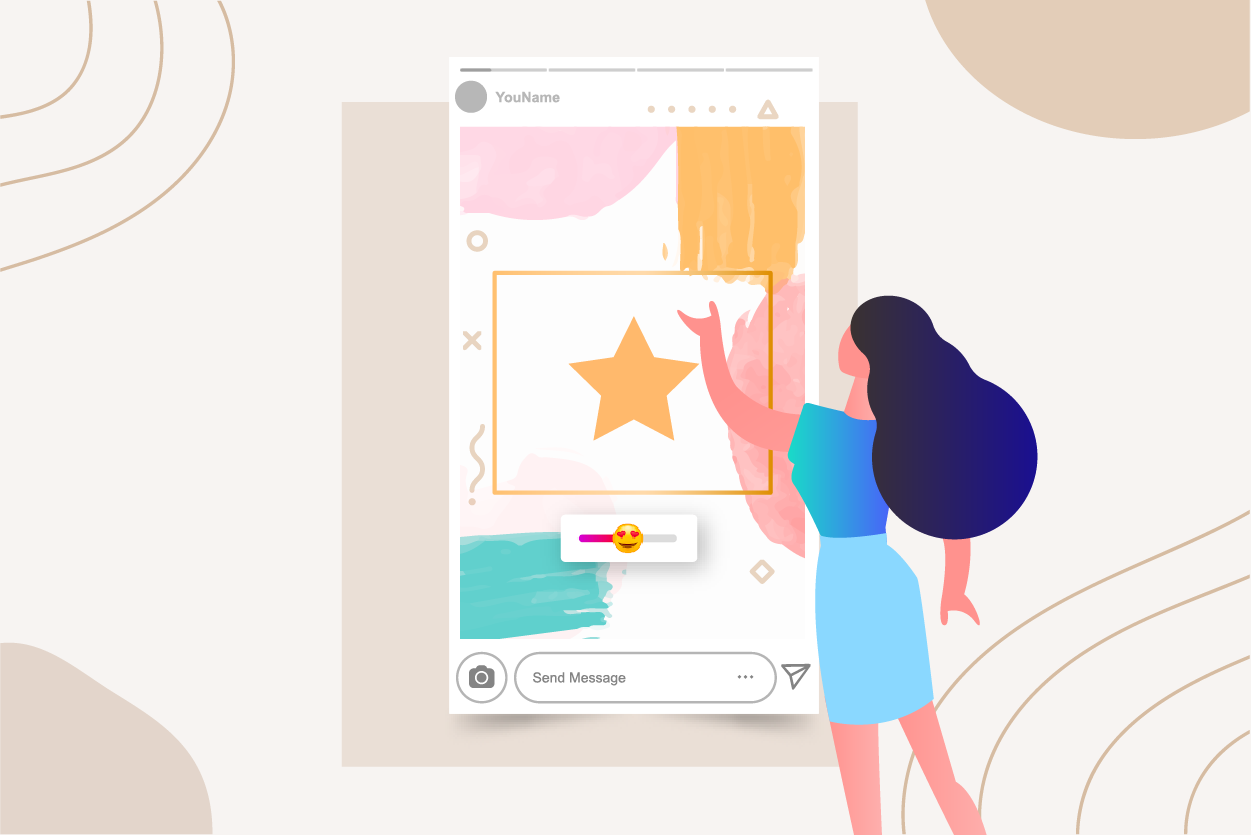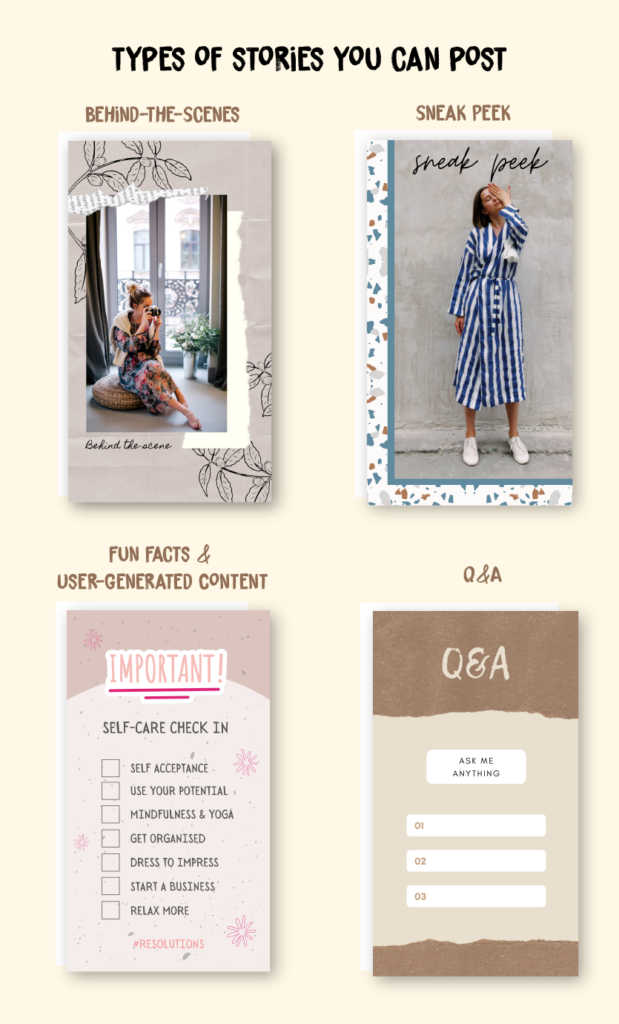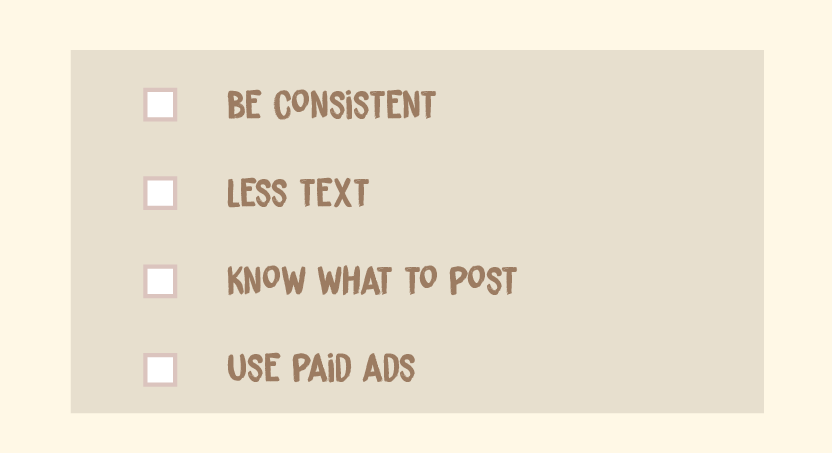

How do you ace the Instagram Stories game?

Instagram Stories is a wide-reaching social media function that’s also an effective marketing tool.
If you’ve been active online recently, you would have noticed that almost all major social media platforms from Twitter to LinkedIn now have the same feature — their own equivalent of Instagram’s Stories.
And while such a feature didn’t actually originate from Instagram, they definitely were the ones who made it popular — so much so that it’s basically the defining aspect of social media platforms in this era.
What exactly is Stories?
Only lasts for 24 hours
Unlike other regular social posts, stories are photos and videos that are designed to disappear after 24 hours. However, Instagram does offer a feature where you can ‘highlight’ a past story and put it on your profile to be viewed, long after the original 24 hours has passed.
15 seconds long, ish
While each story only has a 15-second duration, there is no reason to worry if you upload a video that’s longer — Instagram will automatically help you cut your video into multiple 15-second clips that play seamlessly in sequence.
Often in 19:6 (vertical) format
Since it is primarily a mobile app, most people access their accounts through their smartphones. It comes as no surprise that most of these videos are in 19:6 format, where the audience can view the videos and pictures in all their full-screen glory without having to flip their phones over to landscape mode.
Described with captions, stickers or GIFs
Like with any social post, you can type a caption to accompany your Story, with multiple font styles and font colours to choose from.
You can also add stickers and GIFs to help to keep your stories light, cute, and fun. They are also a great way to entice your audience by adding moving elements to spice up your Stories.
Stories are in many ways the social embodiment of communicating by short-lived memes.
May include user tags, location tags and hashtags
In each Story, you may add tags to other accounts to highlight sponsorship, ambassadorship, or the face of your business. Location tags and hashtags can be added to be easily indexed and searchable by your audience.
Fun polls and countdowns
Polls and countdown can be used to engage with your audience.
Polls can be used to ask your audience’s opinion on specific issues, such as “What kind of content would you like to see more from us?” By doing so, you’ll have the information on what it is that interests your customers the most. Moreover, by incorporating their suggestions and feedback, they’ll see that their opinion matters to your business.
Instagram also allows you to add countdown buttons to your stories. Your viewers can tap on these stickers to turn on reminders for when the timer ends, and they also have the option to add the countdown to their own story that they can share with their followers.
Countdowns are especially useful as they help build a sense of anticipation to an upcoming event, webinar, or a new product launch, hyping up your event before it takes place.
Beautifying filters
You can also edit your Instagram stories by adding a filter over them. And if the ones made by Instagram or other users don’t quite appeal to you, you can even create your own.
Why use Stories?
We can definitely see the appeal in using Instagram stories, especially to show little snippets of your day that might not be quite that “Insta-worthy” to have a permanent place on your profile feed.
But influencers and regular folk aside, there is much potential to be tapped on for brands as well.
As 2020 drew to a close, Instagram reported it surpassed the 1 billion global user mark. A huge milestone that was probably also fuelled by the likes of the pandemic, this feat is a testament to the growing power and reach of Instagram.
If we’re talking about the Stories function specifically — according to Instagram themselves, over 500 million people use Stories daily and guess what? One-third of the most-viewed stories come from businesses.
Moreover, one in five stories resulted in a direct message from their viewer, so it can be said that Stories is one of the most effective marketing tools today for engagement. If your brand isn’t posting any Instagram Stories, you might just be missing out!
Types of Stories you can post

Behind-the-Scenes
People are naturally curious, so you can give your audience an insider’s view of how your company operates through this type of Stories. Stories can range from showing what goes on in a day in an employee’s life, their daily activities and interactions within the company, to a behind-the-scenes video shoot for a new fragrance, like Michael Kors.
Sneak Peek
Have an upcoming product launch or collaboration with someone well-known? Sharing snippets of the sneak peeks will keep your audience guessing, excited, and engage about it, ultimately creating hype surrounding the release.
One example is H&M’s eco Conscious Collection, where it gave customers a glimpse into its back studio and a list of the eco-fabrics it used for the collection.
Fun Facts & User-Generated Contents
One way to establish yourself as one of the players in your industry and create credibility is by sharing industry tips and tricks and information in your stories. One example is a client of ours, Microsoft, who share tech stories in their timeline.
This can be in the form of bullet points with a CTA to swipe up to go to the full article or blog post or shown in a tutorial-like video.
Q&A
Having a Q&A session live on Instagram will ensure audience participation in real-time and build trust, following, and credibility. For instance, having a Q&A session with the CEO or a local influencer gives viewers the chance to find out more about the company straight from the CEO or know the influencer beyond their Instagram pictures, boosting audience engagement.
This is why having data is crucial, ranging from the number of followers to viewership, so you know the appropriate channels and influencers watched mainly by your audience.
Best practices

Be consistent
The way to build a strong brand presence on social media is through consistent branding. Fonts, colours and graphic elements help your Stories look more cohesive and they’re also essential in leaving a lasting impression on your consumers.
Over time, they can also become synonymous with your brand — think Coca-Cola and the colour red, or Pepsi with the colour blue. The idea is to have your brand pop into your viewers’ minds the moment they see your Story when they scroll through their feeds, without having to see your brand name or logo.
Therefore, having consistent themes, colour schemes, fonts, and styles are essential – adhere to the brand guidelines you’ve made beforehand.
Use less text
Instagram is a visual medium. Avoid cramming text on your Stories; it should only be used to add clarity. Emphasise benefits over features, like Daily Harvest, which instead of listing its menu and prices, list the benefits of having its unprocessed frozen foods delivered to one’s doorstep.
Know when to post
Given that Stories only lasted 24 hours, you’ll want to maximise the reach of the content you post. This is where having your customers’ data and habits come into play.
If you have a business profile on Instagram, you will have access to data in your Instagram Insights. Under the audience section, you can see the days and hours when your followers are most active — take that into consideration the next time you upload and try to post during those hours.
Use paid ads
58% of people surveyed say they have become more interested in a brand/product after seeing it in Stories. One way to maximise your post’s reach is through paid ads, where your paid Story ad will appear between other organic Stories.
Unlike organic posts, paid ads can be differentiated with the “sponsored” label at the top, and they are targeted to be seen by your potential consumer demographics based on the parameters you set.
You get to choose the length of the campaign and the frequency with which your ads are served, which means they don’t actually disappear after 24 hours like with the organic posts.
The potential of marketing with Instagram Stories
With the amount of Instagram users growing, the Stories feature is here to stay. Businesses must leverage it today to stay relevant and relevant in today’s business ever-changing landscape.
Want to ace your Instagram Stories today? Contact our Digital Strategist Praveen at [email protected] now!
Read more from Click2View:
- Explore the allure of animated content.
- Here are some AI content tools to try.
- How do you enhance your next webinar?
Sign up to our newsletter for a weekly update on the latest content marketing news. Don’t forget to subscribe to our YouTube channel too!
Click2View is Southeast Asia’s premiere full-service independent B2B content marketing agency servicing clients like Microsoft, Google, Visa, Prudential, and the Lee Kuan Yew School of Public Policy.








